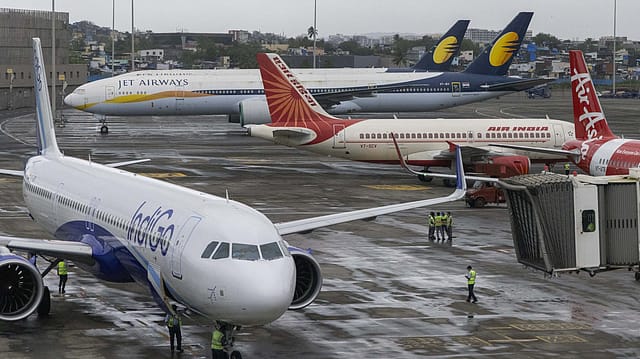Aviation industry suffered ₹11,658 cr loss in FY22
ADVERTISEMENT

The aviation industry is estimated to have reported a net loss of ₹11,658 crore during the financial year 2021-2022, civil aviation minister Jyotiraditya Scindia said in the Lok Sabha today. He said high losses were incurred due to COVID-19 disruptions, rupee depreciation against the US dollar, and a high operating cost environment, especially due to an increase in ATF prices, which constitute a major portion of the operational cost of airlines. Issues like the increase in crude oil prices in the international market, VAT, excise duty and the Russia-Ukraine War also hurt the airline industry's business.
The minister said the airlines were also unable to pass the full impact of cost increases to passengers. The losses incurred in FY22 were less than FY21. "The details of losses incurred by the industry during the last three years are: FY2019-20 ₹4,770 crore; FY2020-21 ₹12,479 crore; and FY2021-22 ₹11,658 crore."
On steps taken to make the aviation industry profitable and create more employment opportunities, the minister said airlines and major airports are operated by the private sector and they evolve their own SoPs for cost minimisation and profitability. "However, the government has taken various steps to facilitate the airlines. The UDAN Scheme of the government of India is a game-changer for the aviation industry," he said.
January 2026
Netflix, which has been in India for a decade, has successfully struck a balance between high-class premium content and pricing that attracts a range of customers. Find out how the U.S. streaming giant evolved in India, plus an exclusive interview with CEO Ted Sarandos. Also read about the Best Investments for 2026, and how rising growth and easing inflation will come in handy for finance minister Nirmala Sitharaman as she prepares Budget 2026.
He said the reduction in Value Added Tax (VAT) on aviation turbine fuel (ATF) was taken up with the states and UTs levying high VAT on ATF. "16 states have reduced VAT on ATF in the range of 1- 4%," he said, adding that Goods and Services Tax has also been reduced from 18% to 5% for domestic maintenance, repair and overhaul services.
To enhance jobs, he said the Airports Authority of India (AAI) and other airport developers have targeted a capital outlay of around ₹98,000 crore in the airport sector in the next five years. "For expansion and modification of existing terminals, new terminals and strengthening of runways, among other activities."
Scindia was also asked if he was aware of private airlines operating in the country that are "technologically archaic", and the government's criteria to determine the airworthy conditions of aircraft, including its lifespan. According to the minister, the Directorate General of Civil Aviation (DGCA) has not prescribed guidelines specifying life for an aircraft to fly in India. Aircraft is considered airworthy provided the maintenance is as per the approved schedule laid down by the manufacturer. "Aircraft registered in India may operate as long as the aircraft is under maintenance support provided by the manufacturer for the continuous operation of the aircraft."
He said the aircraft is withdrawn from operation by an operator if it becomes 'beyond economic repair' or is 'permanently withdrawn from use' due to any reason such as unavailability of spares, etc.
On the government's plans to privatise more airports as part of proposed monetisation, the minister said 25 Airports Authority of India (AAI) airports have been earmarked for leasing from 2022 to 2025, considering proceeds of ₹10,782 crore.
